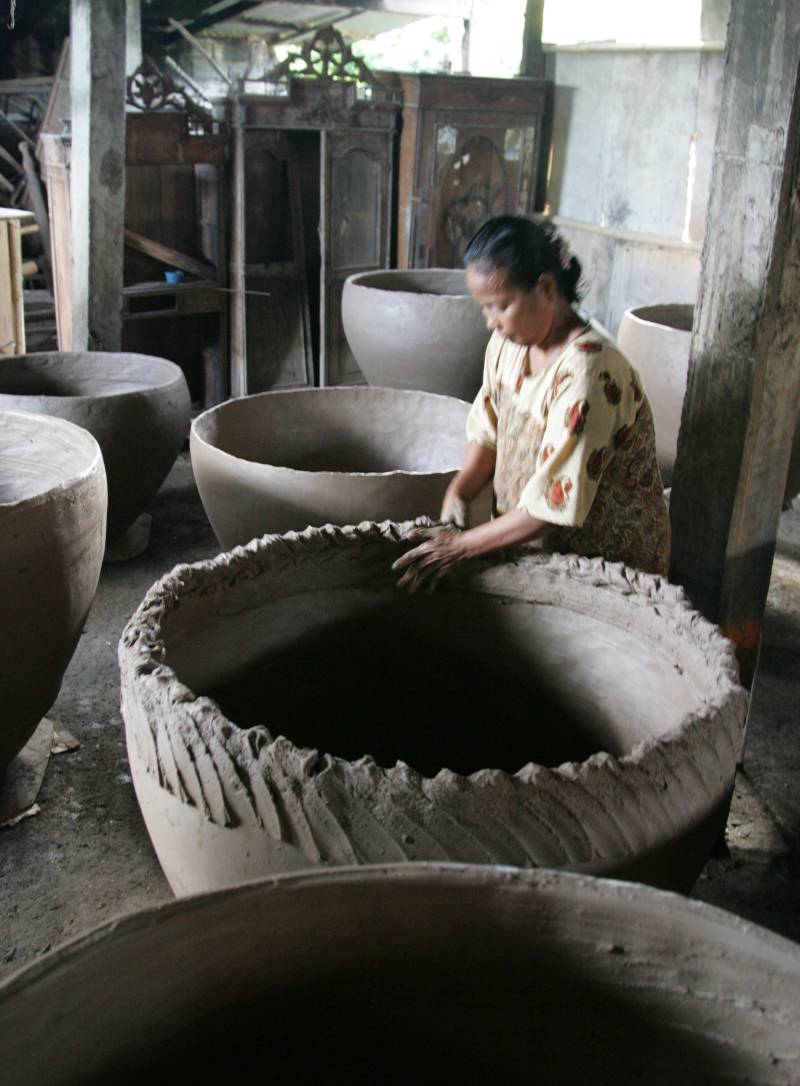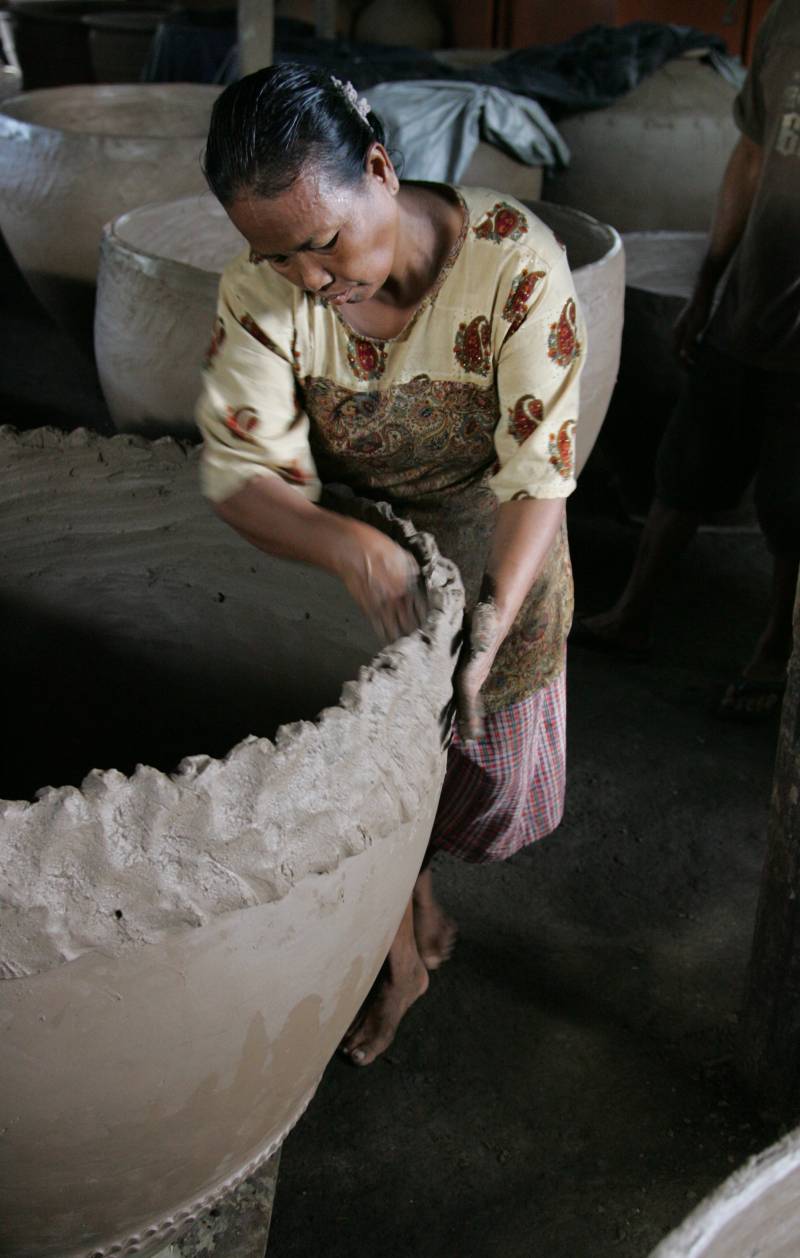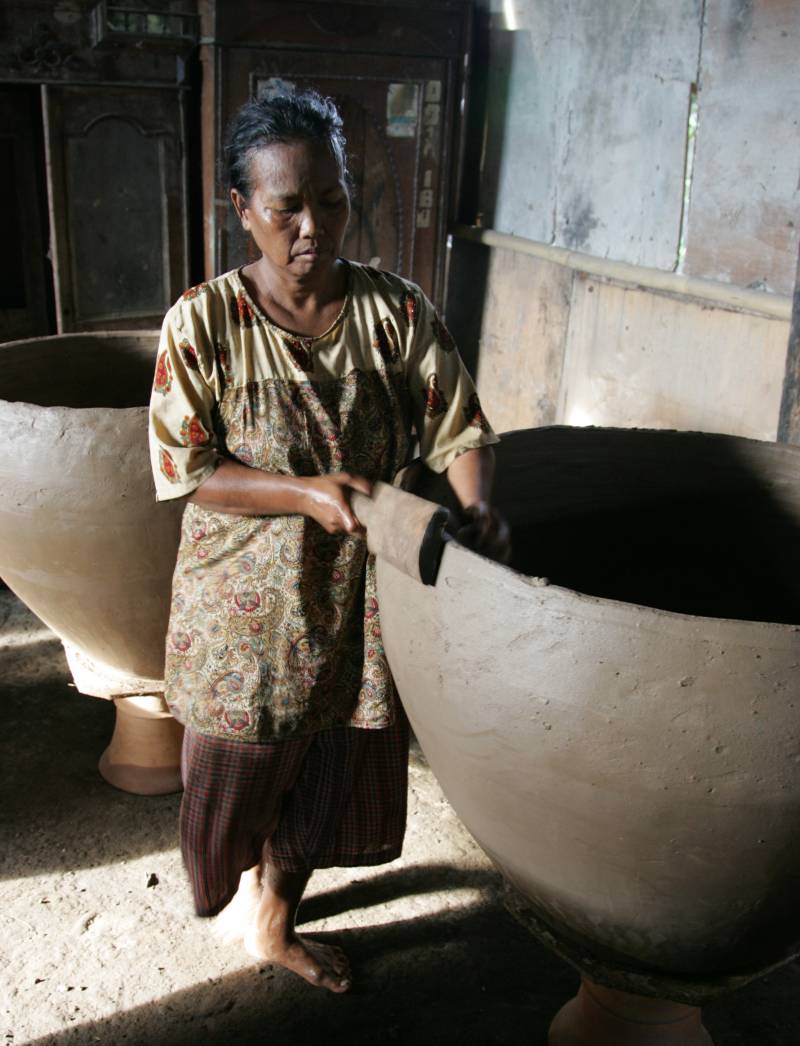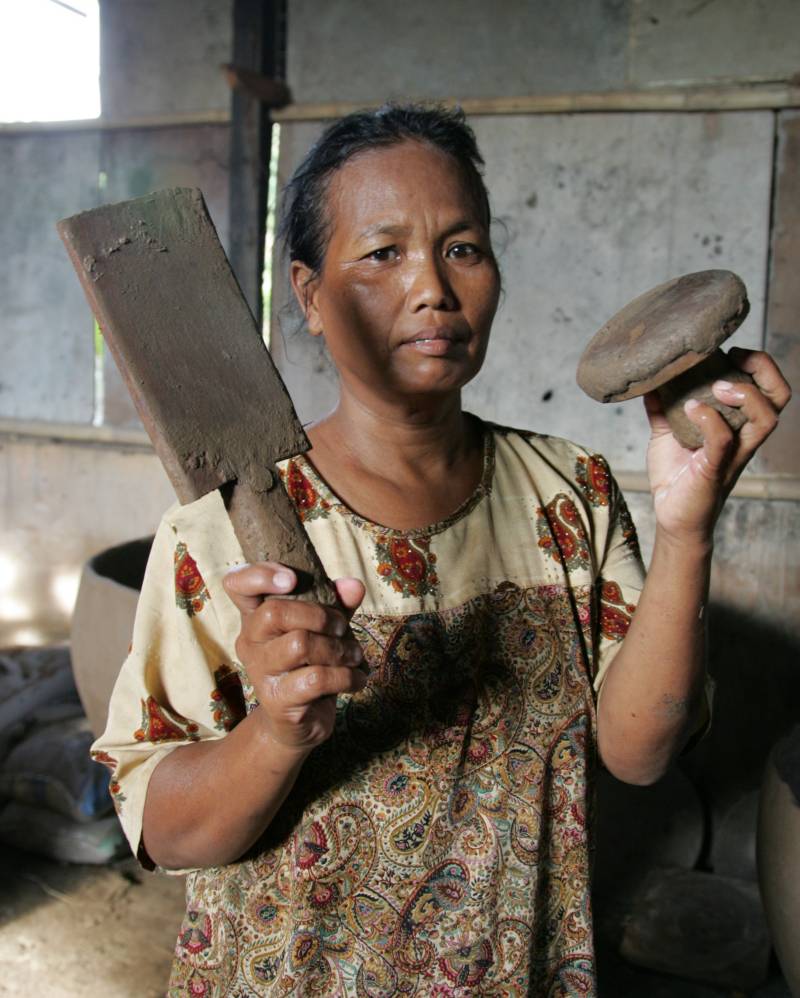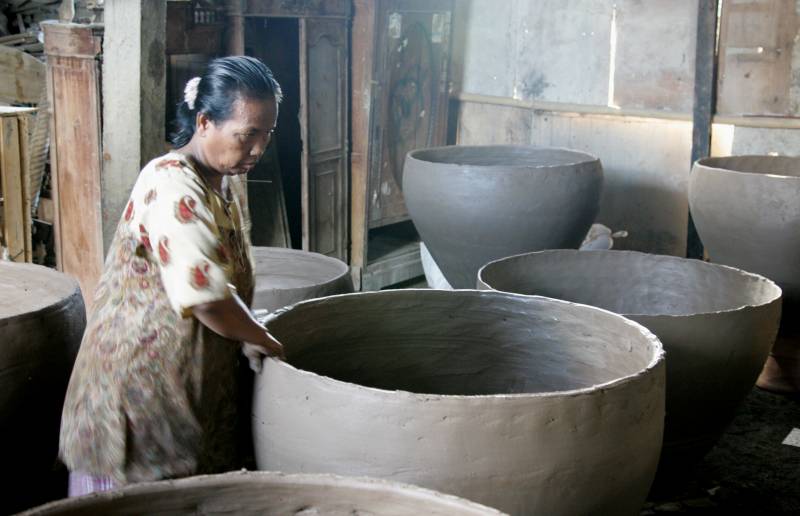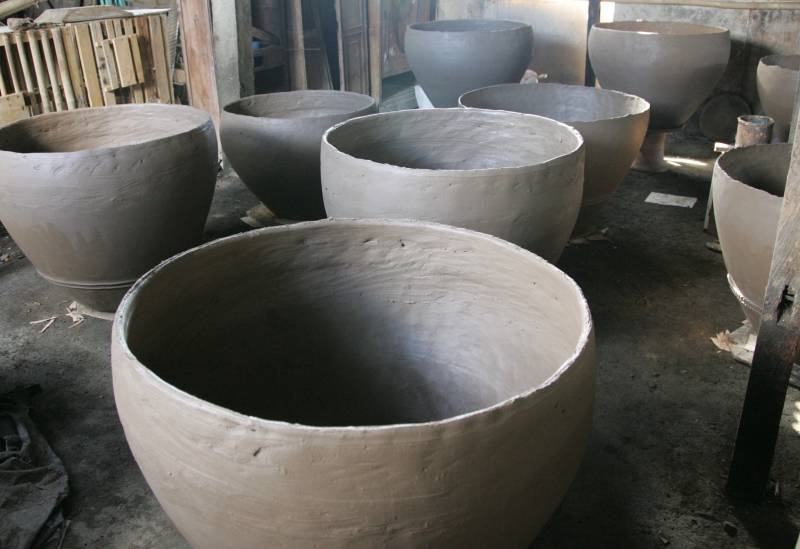Coiling is a traditional way of making pottery that has a long history. It has been used for many thousands of years, from Africa to Greece and from China to New Mexico. The method has been applied in a variety of ways and for pots of various sizes.
Any older method than this probably came around when any of our forefathers tried to water proof a basket with mud and then sat the whole thing on fire by accident, or while trying to move a fire, by carrying it in a mud protected basket. Both should have resulted in the observation that mud could be hardened by fire.
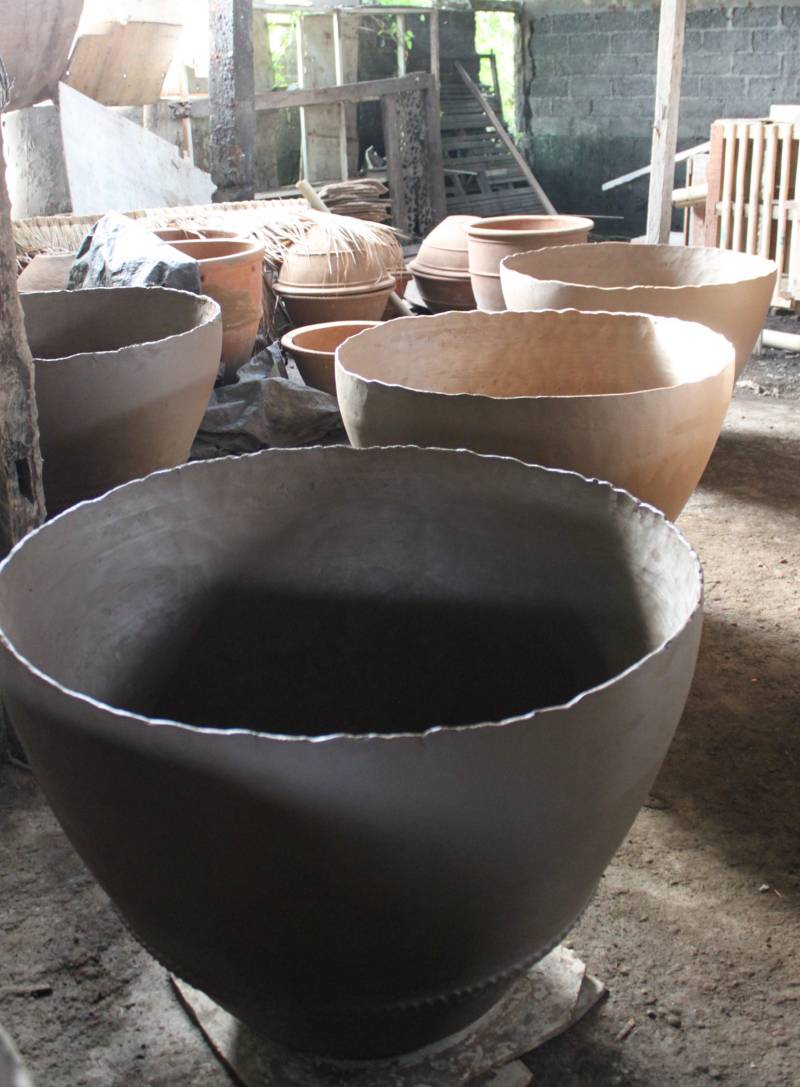
The basic technique starts by making a coil, or a clay string. The thickness of this string decides the thickness of the walls of the pot. Then the coils are placed on top of each other and the walls smoothed out and polished, and the pot is soon made without a turning wheel.
From old Chinese Neolithic pottery it is obvious that the pots were very early in history placed on straw mats that could well have been turned while smoothening, which would have been the first step towards the eventual inventing of the potters wheel.

These Balinese garden pots was built by coiling, from the ground up and they stood solidly still while the woman potter was walking around the pot, adding slab of clay after slab.
Using the coiling technique the walls was build higher and higher, one level at at the time.
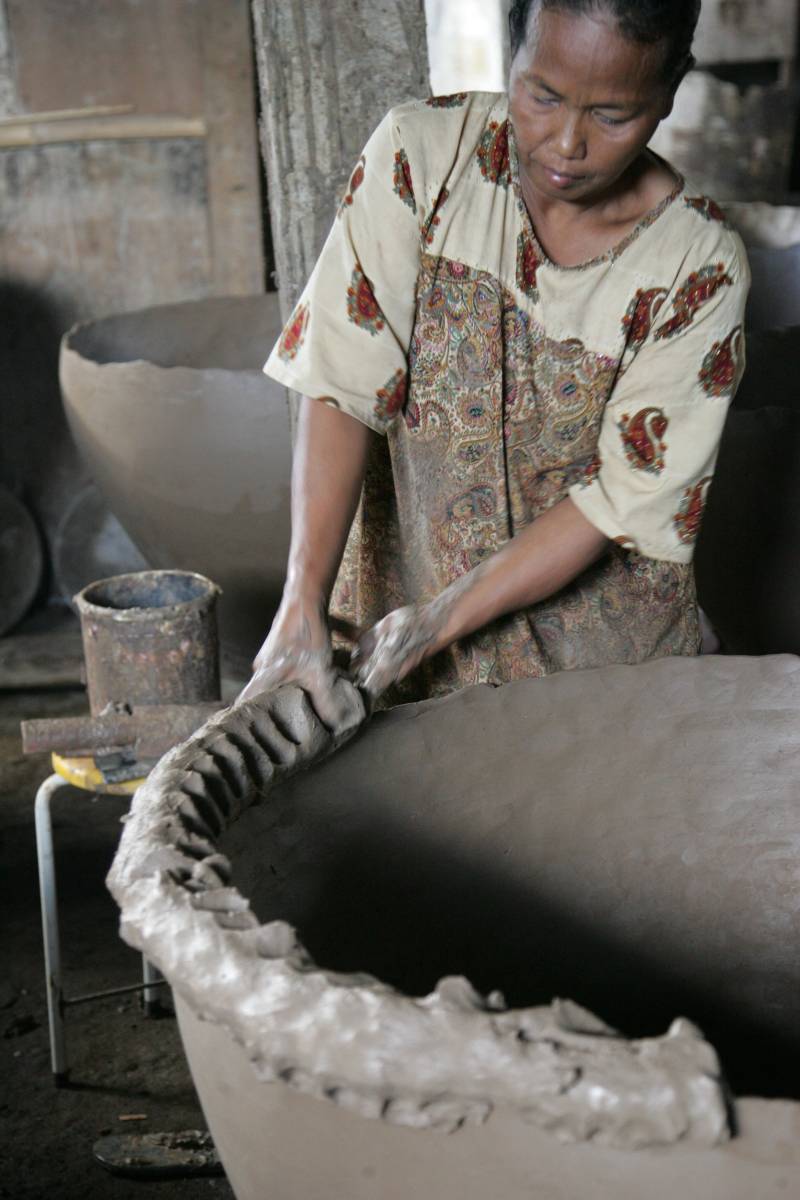
It need top be said that making pots of this size with this method is nothing for the faint hearted. The walls are about 1/2 inch thick and are wobbly, as the next ring is expertly balanced on top of the wall that at this stage is not harder than leather. If it was, it would crack, if softer, it would collapse.
